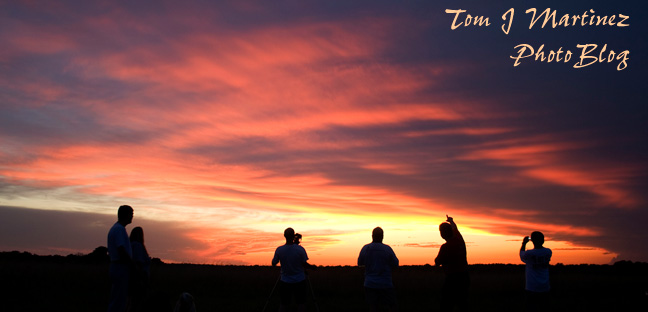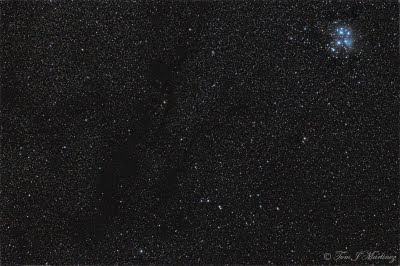Now directly overhead in my part of the world (Kansas City area), the North American Nebula and the Pelican Nebula are very rich areas of gas and dust in the Milky Way. The very dark area, right in the middle of the picture, is actually thick dust and gas in front of the nebulae, but it easily marks the similarity to Florida and the Gulf of Mexico. The nebula that looks like a pelican holding a fish in its beak is to the right of the North American Nebula. The bright star at upper right is Deneb, the brightest star in the constellation Cygnus, the swan. This is a very large area of sky. Four full moons would fit in the North American Nebula. From a dark sky site, away from the light pollution of the city, you can see it without optical aid, looking like a brighter region of the Milky Way. Binoculars improve the view, but a telescope has too much magnification not allowing you to make out the over all shape. It is best seen in wide view photographs.
****
Techinical Photo Info:
Camera: Q453 CCD
Lens: Canon 70-200mm f/2.8 L IS
Focal Length setting: 200mm
Aperture setting: f/4
Exposure: 7 X 10 minutes totaling 70 minutes
Darks: 2 darks to create a dark pixel map
Flats: 20
Biases: 0
Mount: Celestron CGE
Guide Camera: Q-Guider by CCD-Labs
Aligned and Stacked in Nebulosity with final processing in Photoshop




